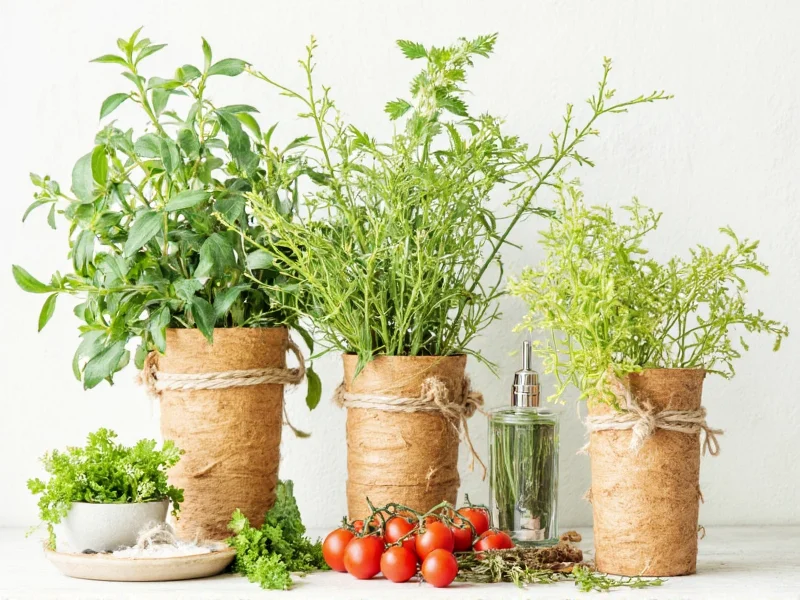Savory herbs form the backbone of countless culinary traditions worldwide, providing the foundational flavors that transform simple ingredients into memorable dishes. Understanding these herbs goes beyond mere identification—it's about recognizing how their unique chemical compositions interact with other ingredients to create complex flavor profiles.
Defining Characteristics of Savory Herbs
The term "savory" in culinary contexts refers to herbs with pronounced, often pungent flavors that enhance umami and deepen overall taste experiences. These herbs typically contain higher concentrations of terpenes and other volatile compounds that withstand cooking temperatures better than delicate sweet herbs.
What distinguishes savory herbs from their sweet counterparts isn't merely taste but chemical composition and culinary function. Savory herbs generally feature:
- Higher concentrations of essential oils that intensify when heated
- Woody or tough leaf structures that withstand long cooking times
- Flavor compounds that mellow and integrate rather than dissipate during cooking
- Complementary relationships with fats, proteins, and acidic components
Most Common Savory Herbs and Their Profiles
| Herb | Flavor Profile | Best Culinary Applications | Substitution Options |
|---|---|---|---|
| Thyme | Earthy, slightly minty with subtle lemon notes | Stocks, braises, roasted vegetables, poultry | Oregano (½ amount), marjoram |
| Rosemary | Pine-like, resinous, with camphor notes | Lamb, potatoes, focaccia, grilled meats | Thyme (double amount), sage (sparingly) |
| Oregano | Peppery, slightly bitter with floral undertones | Tomato sauces, grilled meats, Mediterranean dishes | Marjoram (½ amount), thyme |
| Sage | Earthy, slightly peppery with eucalyptus notes | Stuffing, pork, butter sauces, bean dishes | Marjoram, thyme (½ amount) |
| Bay Leaves | Subtle bitterness with floral, tea-like notes | Stocks, soups, braises, pickling solutions | Thyme (½ leaf), oregano (tiny pinch) |
Understanding Savory vs. Sweet Herbs
The difference between savory and sweet herbs extends beyond simple taste preferences. Sweet herbs like basil, mint, cilantro, and dill contain more delicate volatile compounds that dissipate quickly with heat. These herbs shine in fresh applications—pestos, garnishes, or added at the very end of cooking.
Savory herbs, by contrast, undergo flavor transformation when heated. Their essential oils break down into more complex compounds that integrate with other ingredients. This is why culinary professionals often add savory herbs early in the cooking process while incorporating sweet herbs near the end.
Optimal Usage Techniques for Savory Herbs
Mastering savory herbs requires understanding their optimal usage windows:
- Early addition: Woody herbs like rosemary and thyme should enter dishes at the beginning of cooking to allow their flavors to fully integrate
- Middle addition: Semi-woody herbs like oregano work best added midway through cooking
- Finishing touch: Tender savory herbs like marjoram benefit from being added in the final 10-15 minutes
When using dried savory herbs—which concentrate flavors through dehydration—remember they require rehydration. Add dried herbs to liquids early in cooking, using about one-third the amount of fresh herbs since drying concentrates their essential oils.
Growing and Harvesting Savory Herbs
Most savory herbs thrive in well-drained soil with ample sunlight. Mediterranean natives like rosemary, thyme, and oregano prefer drier conditions, while sage and bay laurel tolerate more moisture. For maximum flavor intensity, harvest savory herbs in the morning after dew evaporates but before midday heat.
The optimal harvesting window occurs just before flowering when essential oil concentrations peak. Regular pruning encourages bushier growth and prevents woody herbs from becoming leggy. When harvesting, cut stems just above a leaf node to stimulate new growth.
Storage Methods for Maximum Freshness
Proper storage significantly extends the usability of fresh savory herbs:
- Refrigeration method: Trim stems, place in water-filled jar, cover loosely with plastic bag, and refrigerate (change water every 2-3 days)
- Freezing technique: Chop herbs, mix with olive oil, and freeze in ice cube trays for ready-to-use cooking portions
- Drying approach: Hang small bundles upside down in a dark, well-ventilated space away from direct sunlight
Dried savory herbs maintain potency for 6-12 months when stored in airtight containers away from light and heat. Test potency by rubbing between fingers—if the aroma remains strong, the herbs are still viable.
Culinary Pairing Principles
Successful herb pairing follows fundamental flavor chemistry principles. Rosemary's pine-like notes complement fatty meats like lamb by cutting through richness. Thyme's subtle lemon undertones enhance poultry without overpowering delicate flavors. Oregano's peppery quality balances the acidity in tomato-based sauces.
When creating herb blends, consider complementary flavor compounds. The terpenes in thyme harmonize with rosemary's camphor notes, while sage's eucalyptus qualities pair well with marjoram's citrus undertones. Understanding these relationships allows home cooks to create balanced flavor profiles rather than haphazard herb combinations.











 浙公网安备
33010002000092号
浙公网安备
33010002000092号 浙B2-20120091-4
浙B2-20120091-4